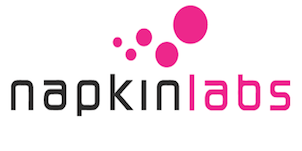Social networks like Facebook and Twitter act as truly effective channels by which companies can interact with their customers and receive near-instantaneous feedback on their products and brands. Of course, the information obtained by way of social networks can still be somewhat of a fire hose.
While social networks provide surfeit casual feedback for brands to take advantage of, they often lack the kind of deep insight into product development, design concepts, or what a company might be doing to better serve its customer base. Companies want to be more effective in communicating with their active user base and valued customers in a collaborative way that actually leads to better products and a better user experience, rather than the alternative.
Today, Napkin Labs is launching a new version of its platform that aims to tackle this problem by creating an online lab space that functions as a collaborative community in which customers can exercise their creative muscles and work together to make their favorite brands even more appealing.
Essentially, Napkin Labs is working to turn valued customers into a creative army by way of a platform that offers them a set of activities (read: apps) that integrate game dynamics and intuitive design that make it easy (and enjoyable) to incubate new ideas and let their opinions be heard. Not unlike IDEO, these apps work towards encouraging an efficient forum in which to spitball ideas about the design process, crowdsourcing that process in such a way that users are encouraged to become designers, marketers, and product developers all at once — giving customers the opportunity to become more intimately involved in the evolution of their favorite brands and products.
Each company or brand can create its own lab, in which Napkin’s apps lead customers through a series of simple questions intended to get to the core of a product’s intended experience, as well as allowing brands to solicit more nuanced and targeted feedback — or go even further by encouraging fans to create video renderings of their suggestions and using video to create fact-finding missions. These customizable app experiences enable brands to understand their customers from a variety of different perspectives and to drive home the idea of real collaboration between brand and customer.
And since every project is game-ified, contributors are rewarded with “influence points” for every suggestion they make, ranking them on a public leaderboard that can be viewed by every participating user. At the end of the design process, each user is offered a reward chosen by the company, whether that be cash, merchandise, or a merit badge.
Companies can further customize the user experience of their product development labs with welcome messages, logos, colors, and various backgrounds, as well as choosing the types of activities users can engage in — like refining an advertising campaign, for example — all in an effort to make the design process more enjoyable and more suitable to driving constructive feedback and iteration.
Another aspect that sets Napkin Labs apart from its competitors is that its platform is really an off-the-shelf solution that can be used by anyone from a single designer to large corporations. Napkin Labs offers a pricing scheme in which businesses pay $99 per month for basic features — all the way to $499 per month for a complete custom experience for individual companies.
The startup’s easy-to-use and clean UI encouraged companies like the Sony Design Center and Google to become early private beta customers of Napkin Labs. Google, for one, used the platform to test ideas for GoogleTV, especially in relation to how younger customers are using web TV in digital media’s changing landscape, according to Napkin Labs Co-founder and CEO Riley Gibson.
For smaller companies that can’t afford to hire a roster of designers and ad specialists for early-stage products, Napkin Labs creates an easy (and cheaper) solution by bringing customers into the game to participate in product iteration and ideation — an approach that may very well prove to be a great approach to building brand loyalty.
It’s an interesting platform. Chime in to let us know what you think. For more, check out the video below:
